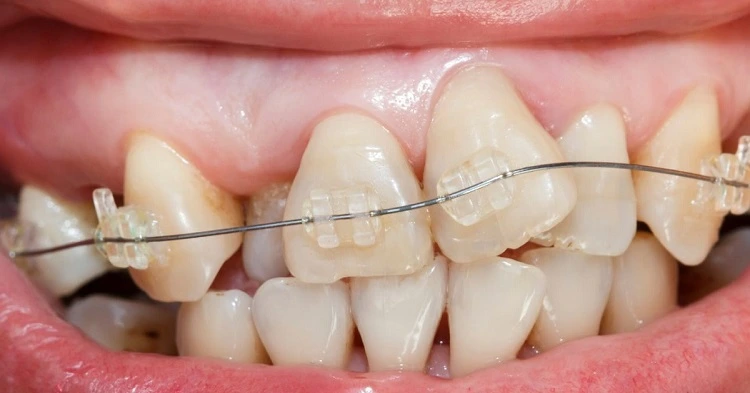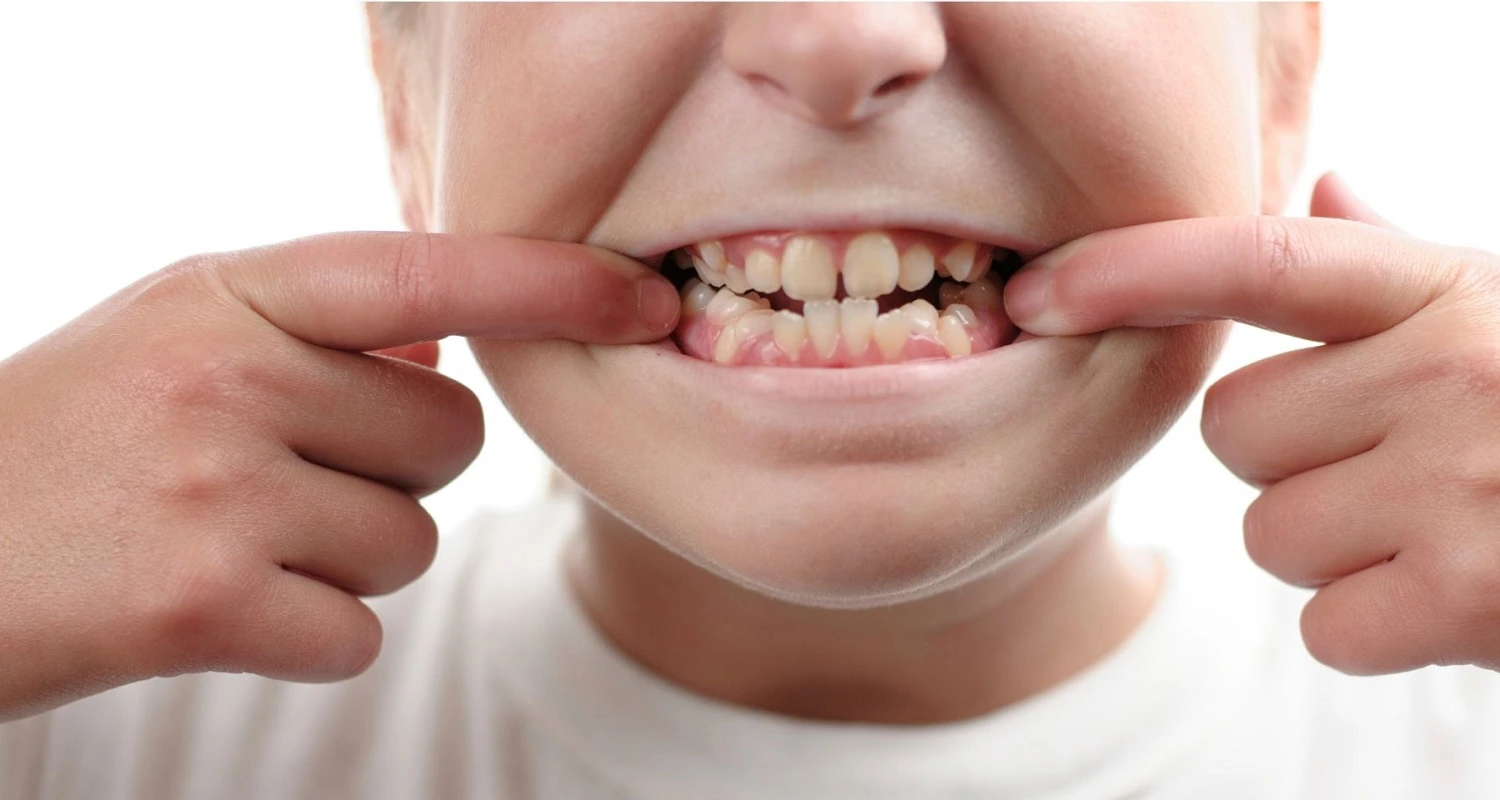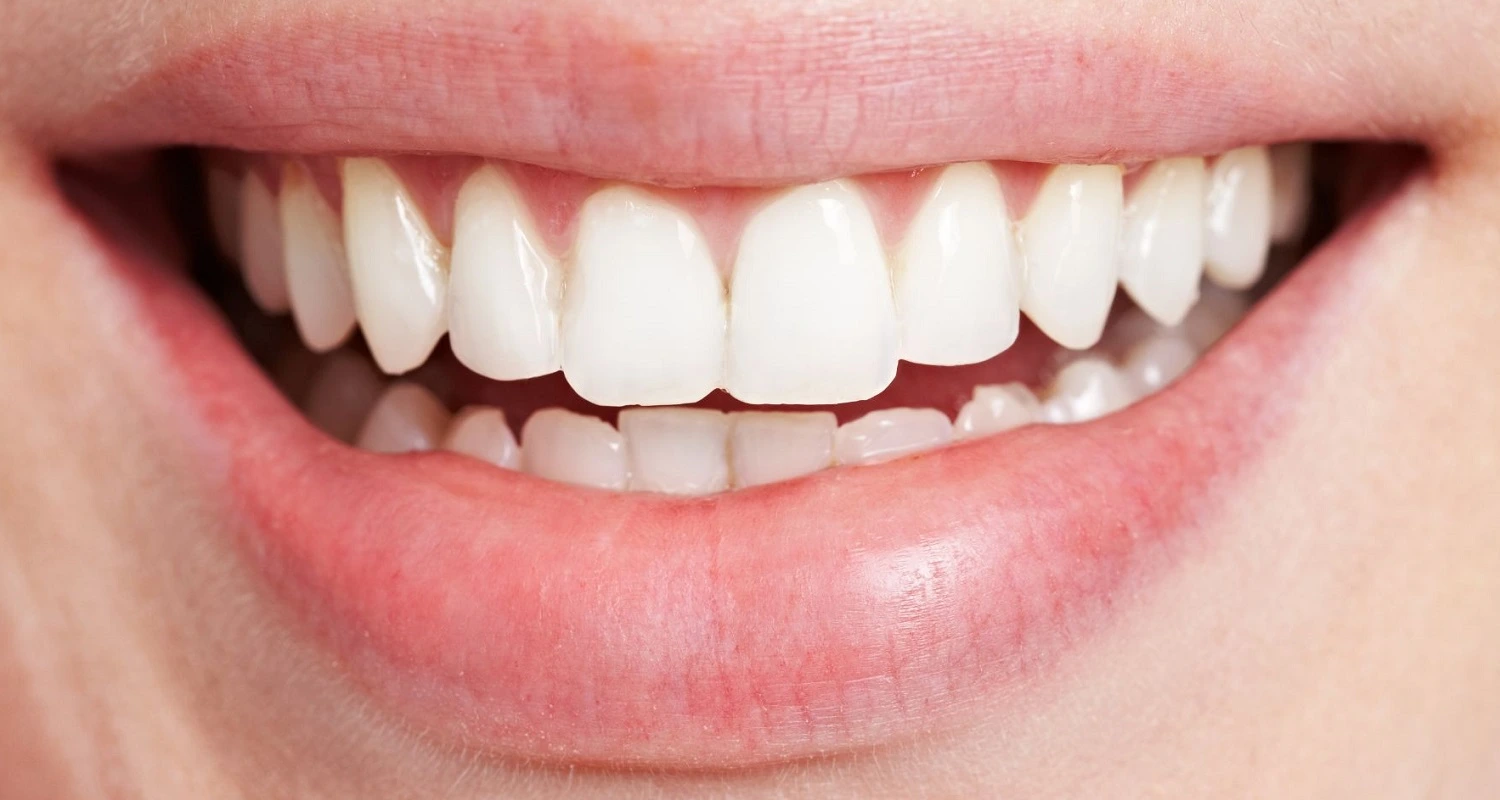Last Updated on: 11th December 2025, 09:59 am
We know that each smile is unique, and diversity gives each individual a certain authenticity and beauty. However, in some cases, crooked front teeth can make some patients uncomfortable, making them feel dissatisfied with their smiles, as well as having implications for oral health. Next, we will tell you everything about crooked teeth, and the existing options to treat them.
Crooked teeth can cause spaces between teeth. When teeth are misaligned, they may not fit together properly as they should. This misalignment can result in gaps or spaces between certain teeth while causing dental crowding in other areas.
Causes of Crooked Front Teeth
Knowing the cause of bad dental positions is essential before proposing a treatment option. Teeth can be misaligned for various reasons:
1. Very large teeth in a very small or narrow jaw.
2. Teeth of normal size in a small jaw.
3. Teeth of normal size that have been displaced due to the absence of other teeth.
4. Very large teeth in normal-sized jaws.
5. Presence of extra teeth or a low insertion frenulum that does not allow a good positioning of the teeth.
Crooked Teeth in Children: It is Not Always Necessary to Intervene
It is natural for parents to worry when children, after shedding their first teeth, have dental malpositions. The truth is that many times, these are corrected once the jaws finish growing. Let us remember that at 6 years of age when children begin dental replacement, the jawbones are still too small to accommodate adult-sized teeth. Even so, it is advisable to attend dental checkups every 6 months to keep track of the child’s jaw and dental growth and development.
The eruption of teeth in children involves the intricate process of tooth growth and the alignment of those newly emerging teeth, potentially leading to crooked teeth. Proper monitoring of this process, along with timely dental assessments, can help identify and address alignment issues early, ensuring a healthier and more confident smile as they grow.
Impact on Oral Health
At first, having crooked teeth may seem like a purely aesthetic problem, but t it can affect the oral health in several ways:
1. Predisposing one to suffer from gum disease and cavities
Having crooked teeth makes oral hygiene difficult since, in some areas, it is impossible to reach with the toothbrush, and flossing can become a little more difficult. The entrapment of food in the spaces between the teeth can cause calculus to accumulate, which is difficult to remove even during a dental visit, which increases the chances of suffering from gum disease. In addition, the presence of food remains between the teeth can generate cavities, which, since they are not evident to the naked eye, are usually discovered when they are already very advanced.
2. Increases the risk of suffering problems in the temporomandibular joint:
Having crooked teeth means that when biting, the jaw does not find an optimal position, and disorders and pain occur in the joint that joins the jaw with the rest of the skull.
Treatments to Align Anterior Teeth
Treatment options to correct crooked teeth are varied; they depend upon the cause of the malpositions and the age of the patient. To decide the most appropriate treatment, the dentist will carry out and analyze tests, take X-rays, make plaster models, or do an intraoral scan of all the teeth. Available treatments include:
1. Brackets
Traditional braces are small metal or ceramic pieces attached to the front surface of the teeth. These brackets are connected with wires that put pressure on the teeth to gradually move them into their correct position. Metal braces are the most common and effective, while ceramic braces are a more aesthetic option since they blend in with the color of the teeth. There are also lingual brackets, placed on the back of the teeth, making them practically invisible from the front.
2. Invisalign
Invisalign is an advanced orthodontic treatment that uses a series of clear, removable aligners to gradually move teeth into their desired position. These aligners are custom-made and changed approximately every two weeks to further the alignment process. One of the main advantages of Invisalign is that the aligners are virtually invisible, making them very popular with adults and teens who want a discreet option. Additionally, the aligners can be removed for eating, brushing, and flossing, making oral hygiene easier.
3. Cosmetic options: Crowns, dental veneers, and resin restorations
In some cases, dental veneers or resin restorations can be used to correct minor cosmetic problems, such as slightly crooked teeth, by correcting their shape. For cases in which dental malpositions are located in a single tooth, it is also possible to correct their shape and position with a dental crown. However, this approach is not suitable for more complex orthodontic problems. It is often used when tooth movement is not possible due to patient preference or health status.
4. Orthotics
When dental malpositions occur in children, it is possible to correct them or reduce their severity with orthopedic appliances that guide the growth of the jaws so the teeth can take a better position. These can be fixed or removable, and they vary depending on the needs of each patient.
5. Other procedures
When the cause of crooked teeth is the existence of an extra tooth (supernumerary) or the presence of a labial frenulum inserted very close to the teeth, it is necessary to perform a small surgical procedure to correct it before trying to align the teeth.
Embracing Unique Smiles
If bad dental positions are mild, do not cause hygiene or bite problems, and the patient feels comfortable with their aesthetics, it is not necessary to perform treatments to correct them. Embracing your unique and authentic smile is always an option.
Frequently Asked Questions
What are the effects of crooked teeth?
Crooked teeth can lead to excessive wear on the teeth, gums, and jaw muscles, resulting in dental cracks, jaw tension, temporomandibular joint disorder (TMJ), and chronic headaches. Other issues associated with crooked teeth include bad breath, difficulty in speaking and pronouncing certain words.
How do crooked teeth impact aesthetically?
According to a study by the American Academy of Cosmetic Dentistry, individuals with aligned teeth tend to be perceived as more attractive, friendly, and approachable compared to those with stained or flawed smiles. Therefore, having crooked teeth can significantly impact appearance and personality.
What are my options if I have a crooked tooth?
The only way to correct crooked teeth and moderate to severe bite misalignment is through orthodontic treatment. This might involve using conventional appliances like braces and wires or utilizing removable transparent aligners.
How long does it take to correct crooked teeth?
The process of aligning teeth typically takes between 12 to 24 months. The exact time required to complete the treatment depends u[on the complexity of the dental misalignment and the duration of teeth movement. A typical orthodontic treatment can extend between 12 to 24 months.
Is it Safe to Remove Crooked Teeth?
The majority of dentists agree that extracting a tooth, unless necessary, is not the best option for correcting a smile, especially when dealing with a single tooth. Not only can this disrupt the symmetry of dental alignment by leaving an uneven number of teeth, but it could also potentially cause the displacement of other teeth.
Share:
References
1. Braces. (2023). WebMD. https://www.webmd.com/oral-health/braces-and-retainers
2. Crooked teeth and misaligned bites. (2021). WebMD. https://www.webmd.com/oral-health/crooked-teeth-misaligned-bites
3. Orthodontics. (Dec 10, 2022). Cleveland Clinic. de https://my.clevelandclinic.org/health/treatments/24285-orthodontics
4. Whelan, C. (May 8, 2019). Crooked teeth: Causes, concerns, and how to straighten. Healthline. https://www.healthline.com/health/dental-and-oral-health/crooked-teeth
5. Orthodontics. (s/f). Mouthhealthy.org. https://www.mouthhealthy.org/en/az-topics/o/orthodontics
-
Nayibe Cubillos M. [Author]
Pharmaceutical Chemestry |Pharmaceutical Process Management | Pharmaceutical Care | Pharmaceutical Services Audit | Pharmaceutical Services Process Consulting | Content Project Manager | SEO Knowledge | Content Writer | Leadership | Scrum Master
View all posts
A healthcare writer with a solid background in pharmaceutical chemistry and a thorough understanding of Colombian regulatory processes and comprehensive sector management, she has significant experience coordinating and leading multidisciplina...



















